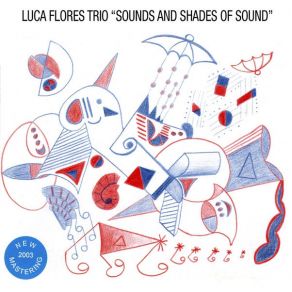Sounds And Shades Of Sound
Download links and information about Sounds And Shades Of Sound by Luca Flores. This album was released in 1990 and it belongs to Jazz genres. It contains 7 tracks with total duration of 59:01 minutes.

|
|
|---|---|
| Artist: | Luca Flores |
| Release date: | 1990 |
| Genre: | Jazz |
| Tracks: | 7 |
| Duration: | 59:01 |
| Buy it NOW at: | |
| Buy on iTunes $9.99 | |
Tracks
[Edit]| No. | Title | Length |
|---|---|---|
| 1. | Averti Fra Le Mie Braccia (featuring Luca Flores Trio) | 6:50 |
| 2. | Angela (featuring Luca Flores Trio) | 6:20 |
| 3. | Ode To The Ocean (featuring Luca Flores Trio) | 8:24 |
| 4. | Feux Rouges (featuring Luca Flores Trio) | 5:05 |
| 5. | Darn That Dream (featuring Luca Flores Trio) | 5:52 |
| 6. | Softly As In A Morning Sunrise (featuring Luca Flores Trio) | 17:30 |
| 7. | Dice Dance (featuring Luca Flores Trio) | 9:00 |
Details
[Edit]Pianist Luca Flores represents the best in lyrical Italian creative jazz. His knowledge of and respect for the jazz piano tradition is comprehensive to say the least, his dexterity on the keys is second to none, and his innate abilities as a composer to meld different parts of the jazz tradition and Italian folk song is paramount. This trio date with bassist Lello Paretti and drummer Piero Borri is remarkable for its diversity. Of the seven selections here, three are by Flores, two by Luca Tenco, and two are standards (Jimmy Van Heusen's "Darn That Dream" and the Romberg-Hammerstein gem "Softly as in a Morning Sunrise"). While the standards are first-rate for the interplay between Paretti and Flores and for Flores' deeply lyrical solos, it is Tenco's "Averti Tra le Mie Braccia" and Flores' own "Dice Dance" that are most interesting. On the former, the swinging chromaticism Flores displays in the intervals is keen, highlighting accents without overwhelming the melody and infusing with a chunky, swaggering swing that in turn showcases the tangled rows of arpeggios Flores plays. On the latter, recorded live, Flores takes the samba and the blues and grafts them onto one another, making the piano a true rhythm machine akin in accent and turnaround power to the drums. His contrapuntal study of the melody as an inverted series of chordal statements is truly phenomenal. It could have been recorded better, but that's a small complaint. This is a solid offering, remarkable even, from top to bottom.